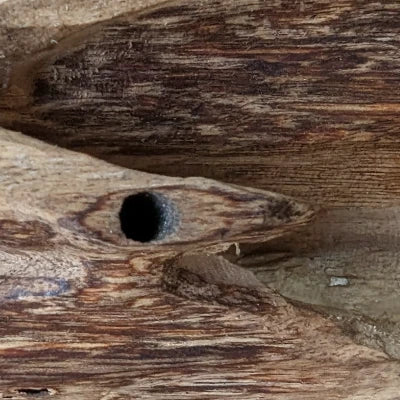Menu
-
-
F.A.Q
- How to identify genuine agarwood chip, natural or cultivated
- How to identify oil injection / absorption fake agarwood beads
- How to know if there are more than one oil in your oil
- How to make your wood bracelet or mala darker
- How to tell if an Agarwood bead sinks WITHOUT sinking it under water?
- How does back flow incense work and how do you burn it?
- Where to start if you don't know what agarwood is ?
- Why are you losing money if you buy seeds and plants?
- Which agarwood incense should I choose?
- Frequently Asked Questions
- Agarwood Related Articles
- Shipping
-
SHOP - Agarwood
-
SHOP - Other Fragrant Wood
-
SHOP - Incense Holder and Burner
-
- FREE guide book
- Testimonials
- "Why did you buy this?"
- Contact us
- About Us
- +61430284329
- Login
-
English

Backed by science, the benefit of agarwood leaf
January 01, 2015 6 min read
Treating insomnia
Max Coradi, author of "Cure with out side effects", showed that agarwood has been used since ancient to cure insomnia.
For more information about the book, click here
Terpenoids with sedative and anxiolytic effects found in agarwood leaves would relax your body and calm your mind (Mamoru Kakino, Gifu Pharmaceutical University). It also provides constipation relief.
How Aquilaria leaves alleviates constipation in vitro
From the above article, we learnt that EEA (Ethanol Extract Agarwood Leaves) is very benefical
Imagine that you're feeding rats different amounts of a Aquilaria leaves extract called EEA. If you give them a big amount once, it helps them poop more frequently and with more weight. Smaller amounts seem to help a bit, but not in a big noticeable way. However, if you give them these smaller amounts every day for two weeks, it does make a difference. It's as if the EEA acts as a poop-booster that doesn't get less effective if used repeatedly.
Nowadays, a lot of people use plant-based medicines, including for stomach and digestion problems. Some of these medicines have proven effects, but it's important to remember that they can also have side effects. One common plant medicine is Senna, but it can cause problems like severe diarrhea and stomach cramps, making it not ideal for daily use.
On the other hand, there's a plant called Agarwood that's used in Southeast Asia, often in the form of a tea. Scientists found a certain substance in Agarwood, called genkwanin-5-O-beta-primeveroside, that can help make the digestive muscles move more, helping food pass through.
Interestingly, there are many different types of Agarwood plants. A previous study showed that extracts from two types of these plants, from Taiwan and Thailand, can help relieve constipation in mice. They also found that these extracts can make the digestive muscles move more and make food pass through the digestive system faster.
In a recent study, they used EEA, the Agarwood extract, on rats that were constipated because they didn't eat enough fiber. The EEA helped them poop more frequently and with more weight, and it also helped the food pass through their bodies faster. This suggests that EEA might be a good solution for people who are constipated because of their low-fiber diet.
The type of constipation that comes from a low-fiber diet is related to the consistency of the poop. Poop consistency depends on how much water-holding stuff, like fiber, is in it. If there's enough of this stuff and not much free water, poop stays solid. But if there's too much free water and not enough water-holding stuff, poop becomes watery. Even though EEA helped the rats' poop contain more water, it didn't help them poop more frequently or with more weight, suggesting that just adding water isn't enough to solve constipation from a low-fiber diet.
What seems to be happening is that EEA can make the digestive muscles move more, helping food pass through without causing diarrhea, like Senna does. EEA also doesn't affect body weight, unlike Senna. This suggests that EEA can help food move through the digestive system faster without causing any negative effects.
2. Reduced blood sugar level, a promising source for anti-diabetic agent.
In 2011, a study conducted by Songklanakarin and his team found that Agarwood leaves extract possess antipyretic, laxative and antimicrobial activities. A trial of one diabetic patient taking long term agarwood leaf tea was found to have blood glucose returned to normal.
Study on rat also found similar pattern
The research shows how different treatments affect the fasting blood sugar levels in diabetic rats that were given STZ, a compound that is often used to induce diabetes in animals for research purposes.
There are five groups of rats:
-
The "Control diabetic" group did not receive any treatment. Their blood sugar levels before the treatment were 314 mg/mL on average, and after a week, they slightly increased to 310 mg/mL. One week after stopping treatment (which is technically no treatment), their blood sugar levels increased again to 356 mg/mL.
-
The "Diabetic + Ins 4 U/kg" group was given insulin. Before the treatment, their blood sugar levels were higher, at 365 mg/mL, but dropped dramatically to 97 mg/mL after a week. However, after a week without insulin, their blood sugar levels rose again to 335 mg/mL.
-
The "Diabetic + ME 1 g/kg" group was given a methanol extract of agarwood leaves. Before treatment, their blood sugar levels were 305 mg/mL, and dropped to 141 mg/mL after a week of treatment. However, one week after stopping the treatment, the blood sugar levels increased to 278 mg/mL.
-
The "Diabetic + WE 1 g/kg" group was given a water extract of agarwood leaves. They started with blood sugar levels of 257 mg/mL, which dropped to 153 mg/mL after a week. But their blood sugar levels increased to 247 mg/mL one week after stopping the treatment.
-
The "Diabetic + HE 1 g/kg" group was given a hexane extract of agarwood leaves. Interestingly, their blood sugar levels actually increased from 280 mg/mL before treatment to 316 mg/mL after a week of treatment. One week after stopping treatment, their blood sugar levels increased further to 383 mg/mL.
The above shows how insulin and various extracts of agarwood leaves affect the fasting blood sugar levels in diabetic rats. The percentages indicate the changes from before the treatment to after one week of treatment. The letter "a" next to some numbers indicates that the difference in blood sugar levels before and after treatment was statistically significant (p < 0.001). The letter "b" shows that the change was significantly different from the control diabetic group (p < 0.05).
This study found that methanol and water extracts from agarwood leaves exhibited anti-hyperglycemic activity, meaning they lowered blood sugar levels in diabetic rats. Additionally, these extracts increased glucose absorption by fat cells from normal rats and exhibited antioxidant activities. On the contrary, the hexane extract of agarwood leaves didn't demonstrate any anti-hyperglycemic activity.
Interestingly, the reduced fasting blood sugar levels observed in the rats treated with the methanol and water extracts corresponded with an increased glucose absorption by fat cells. This suggests that these extracts could lower blood sugar by increasing glucose uptake by these cells, similar to how insulin works. It's noteworthy that a very small concentration of the extract (1 µg/mL) showed glucose uptake close to that of the insulin control. Therefore, even lower doses should be explored in future research.
Concentrations of 3 and 10 µg/mL of the extracts showed slightly better glucose uptake than 1.5 nM of insulin, which was used as a positive control. However, this increase was not consistent with increasing concentration, and in fact, at the highest tested dose (30 µg/mL), glucose uptake seemed to decrease. This suggests that the relationship between extract concentration and glucose uptake may be more complex and will need further exploration, possibly with lower extract concentrations.
Various plant extracts have been reported to enhance glucose uptake, such as mulberry and roselle (Hibiscus sabdariffa) extract. Other herbal extracts, like Agaricus campestris and Coriandum sativum, have been found to mimic the effects of insulin on glucose metabolism.
Though the agarwood leaf extracts demonstrated antioxidant activities, it's unclear whether these antioxidant properties contribute to their anti-hyperglycemic effects and glucose uptake enhancement. Antioxidants have been known to be beneficial in preventing or treating various diseases, including diabetes. However, it's unlikely that the antioxidants in agarwood extract could reverse the damage induced by STZ-induced diabetes, as it is considered permanent.
The mechanism by which these extracts mimic insulin's effects on glucose uptake isn't fully understood, but it's possible they interact with GLUT4, a glucose transporter found in insulin-responsive tissues like fat cells, skeletal muscle, and the heart. Therefore, future research should aim to uncover the exact mechanisms by which agarwood extracts affect glucose metabolism, and to isolate the specific compounds responsible for this activity.
The methanol and water extracts from agarwood leaves seem to lower blood sugar levels in diabetic rats. This effect is likely due to these extracts increasing the uptake of glucose. Future studies should explore using smaller doses of these extracts to determine the best dosage for potential human trials. Given these findings, agarwood leaves show promise as a potential treatment for diabetes, making agarwood a potentially valuable resource for anti-diabetic medicine.
Leave a comment
Comments will be approved before showing up.
Also in News

Anoint with The Zen Path, and you will never yearn for the artificiality that numbs the senses
March 03, 2024 2 min read

You say: “Your Agarwood is too expensive”. Let’s Reason Together - about Price
February 14, 2024 8 min read
